Artificial Intelligence Can Now Detect Breast Cancer 5 Years Before It Develops

Breast cancer is a reality that too many women face, with 1 in 8 likely to develop it in their lifetime. But what if I told you there’s a breakthrough—something so advanced, it can predict the risk of breast cancer up to five years before it even develops? That’s the world we’re stepping into, and it’s not science fiction. It’s happening right now.
Meet AsymMirai, a revolutionary AI model rewriting the rules of early detection. Unlike the systems that came before it, this isn’t some mysterious “black box” leaving us with more questions than answers. AsymMirai focuses on the subtle differences in breast tissue—differences so slight that even the human eye can’t catch them. It’s not just about detection; it’s about understanding, transparency, and giving us a powerful tool to fight one of the most common cancers impacting women worldwide. This isn’t just innovation—it’s a lifeline. A chance to save lives, reduce suffering, and rewrite the story of breast cancer as we know it.
The Gaps in Breast Cancer Detection
For decades, breast cancer detection has leaned heavily on mammograms and genetic testing—tools that have saved countless lives but are far from infallible. Mammograms, while a critical diagnostic tool, miss nearly 20% of breast cancers, often overlooking early-stage or aggressive tumors. Genetic testing, while helpful in identifying inherited risks, fails to account for all cases. High-profile stories, like Olivia Munn’s diagnosis despite a negative genetic test and a normal mammogram, reveal just how limited these methods can be.
Early attempts to bring AI into breast cancer screening haven’t been without challenges. Many models operate as opaque “black boxes,” offering predictions without any explanation of how they arrived at their conclusions. For clinicians, this lack of transparency creates a barrier to trust. Meanwhile, concerns about overdiagnosis, unnecessary interventions, or missed diagnoses have underscored the need for AI systems that are both accurate and interpretable. Enter AsymMirai—a system that doesn’t just predict breast cancer risk but redefines how it’s done. By providing clarity and transparency alongside precision, AsymMirai bridges the gap between advanced technology and clinical confidence, offering a new way forward in breast cancer detection.
AsymMirai: Redefining Breast Cancer Prediction

Artificial intelligence has always been a promising tool in healthcare, but AsymMirai is changing the game entirely. Unlike the traditional “black-box” AI systems that leave clinicians questioning their reliability, AsymMirai offers transparency and clarity. Its groundbreaking methodology focuses on detecting localized bilateral dissimilarities—subtle differences in breast tissue between the left and right breasts that often go unnoticed. Here’s the magic behind it: AsymMirai uses a convolutional neural network (CNN) to analyze mammogram images, extracting critical features and calculating risk scores. These scores, ranging from 0 to 1, indicate the likelihood of developing breast cancer within the next 1 to 5 years. What makes this process remarkable is that it doesn’t just provide a number—it offers an explanation that radiologists can easily understand and trust.
The model’s simplicity and accessibility are what make it truly revolutionary. By leveraging existing mammogram data, AsymMirai integrates effortlessly into current medical practices. It’s not just about predictions—it’s about creating a bridge between technology and clinical care, enabling personalized screening strategies and empowering healthcare providers to take action earlier than ever before.
How Accurate Is AsymMirai?
When it comes to early detection, accuracy isn’t just a metric—it’s a lifeline. AsymMirai sets a new standard, demonstrating a predictive accuracy of 66% when analyzing a single year of data. But here’s where it gets remarkable: when consistent patterns of bilateral dissimilarity were observed across multiple years, its accuracy soared to an impressive 88%. This leap in precision solidifies AsymMirai as a groundbreaking tool for predicting breast cancer risk before it manifests. The model’s success is rooted in robust training. Using the EMBED dataset—a collection of mammograms from over 116,000 patients representing diverse racial backgrounds—the development team ensured that AsymMirai could perform reliably across different demographics. This inclusivity makes it a powerful and equitable tool in breast cancer detection.
Moreover, its performance was validated against its predecessor, Mirai, showing a correlation coefficient of over 0.68, proving that advanced accuracy doesn’t require unnecessary complexity. Unlike traditional risk calculators that rely heavily on genetic data or family history, AsymMirai takes a revolutionary approach. By analyzing subtle tissue changes invisible to the human eye, it bridges the gap between clinical intuition and data-driven insights. This level of precision and innovation empowers healthcare providers to deliver more personalized, proactive care—turning predictions into preventative action.
Why Early Detection Matters
 Image source: Shutterstock
Image source: Shutterstock
Early detection can mean the difference between life and death for breast cancer patients. When caught at its earliest stages, the five-year survival rate approaches 100%. Unfortunately, traditional methods often miss subtle signs, leaving many to face advanced, harder-to-treat cancers. Breast cancer is unique to each individual, shaped by genetics, lifestyle, and environment. Early-stage tumors are often too small or scattered for conventional imaging to detect, but AI can analyze mammograms with unmatched precision, identifying irregularities years before they become evident. This allows patients to start treatment sooner, improving survival rates and reducing the need for aggressive therapies like chemotherapy or mastectomy.
Beyond saving lives, early detection improves quality of life and reduces the physical and emotional toll of advanced treatments. It also eases the strain on healthcare systems by lowering costs and resource demands. With tools like AI, we’re not just advancing technology—we’re empowering patients and transforming healthcare.
Collaboration Between AI and Medical Experts
 Image source: Shutterstock
Image source: Shutterstock
One of the most transformative aspects of artificial intelligence in healthcare is how it collaborates with, rather than replaces, medical professionals. In breast cancer detection, this partnership is not about sidelining radiologists but equipping them with a powerful ally to enhance their expertise. Together, AI and medical experts are forming a dynamic team that significantly improves diagnostic accuracy and patient care. Radiologists are highly skilled in identifying anomalies within mammograms, but even the most experienced professionals face challenges with ambiguous or complex cases. Fatigue, human error, and the sheer volume of mammograms requiring analysis can all impact performance.
AI steps in to fill these gaps, providing a second pair of “eyes” that never tire and are trained to spot even the subtlest patterns linked to early-stage cancer. This support not only reduces the likelihood of missed diagnoses but also improves efficiency, allowing radiologists to focus their time and attention on high-priority cases. Studies have shown that AI performs exceptionally well when used alongside human expertise. For instance, in trials where radiologists worked with AI systems, diagnostic accuracy increased compared to when either worked alone. AI doesn’t just offer predictions; it provides detailed explanations of its findings, giving radiologists clear and actionable insights. This transparency builds trust and empowers doctors to make better-informed decisions for their patients.
The Road Ahead for AI in Healthcare
AI’s role in breast cancer detection is more than a technological advancement—it’s a reimagining of what healthcare can be. By shifting the focus from treatment to prevention, AI opens the door to earlier detection and better outcomes, not just for breast cancer but for countless diseases like Alzheimer’s and lung cancer. This is about giving people the chance to act before illness takes over, transforming fear into empowerment. But this future won’t build itself. To make AI a true force for good, collaboration is essential. Developers, healthcare providers, and policymakers must work together to refine these systems, eliminate biases, and ensure access for all.
Transparency and trust are just as important as the technology itself. When patients and clinicians believe in these tools, they can work in harmony to save lives and redefine care. The challenges ahead—like training, infrastructure, and ethics—are real but not insurmountable. With vision and commitment, AI can be more than a machine; it can be a symbol of humanity’s ability to protect what matters most. This isn’t just about algorithms or data. It’s about using innovation to create hope and crafting a world where health starts with prevention and every person has the chance to thrive.
Featured Image Source: Shutterstock
Sources:
-
Donnelly, J., Moffett, L., Barnett, A. J., Trivedi, H., Schwartz, F., Lo, J., & Rudin, C. (2024). ASYMMIRAI: Interpretable Mammography-based Deep learning Model for 1–5-year breast cancer risk prediction. Radiology, 310(3). https://doi.org/10.1148/radiol.232780
Loading...





